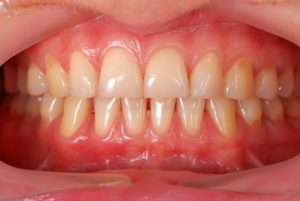- Brendan Blanchard
- May 26, 2018
- 8:57 am
- No Comments
Your dentist handles many aspects of your oral health, but were you aware there was a field of dentistry that focuses solely on your gums? While many dentists are trained to treat issues related to your gums, they may not have the same expertise that your periodontist in Washington D.C. has.
With this expertise comes techniques and therapy that could make a huge difference in fighting gum disease. To fight the effects of periodontal disease, you’ll want to be aware of your treatment options.

What are the Potential Effects of Periodontal Disease?
Also known as gum disease, periodontal disease is an infection of the gum line which occurs after bacteria accumulates inside your mouth, specifically along the gums. Gone unchecked, this disease can cause redness, tenderness, swelling, and even bleeding, particularly after brushing or flossing. Symptoms such as these needed to be treated by a health professional right away as your overall health is at stake.
There’s a saying in the dental community that the mouth is a mirror for the rest of your body. If you have an unhealthy mouth, chances are there are other issues that can or will soon arise. It’s become increasingly common for gum disease to be linked to other diseases in the body because of this exposure in your mouth.
For example, as bacteria enters the deep pockets between your teeth and gums, it will soon enter your bloodstream. These bacteria can travel to any other organ in your body; these areas are not used to fighting this type of bacteria, so it makes them especially vulnerable. As your body removes these bacteria, it only increases your risk of contracting other serious diseases, such as heart disease, stroke, and even cancer. That’s where your periodontal therapy in Washington D.C. comes in.
What is Periodontal Therapy?
Similar to a dentist, periodontists focus on treating symptoms that are often a result of periodontal disease. Like a dentist cleans teeth, a periodontist removes bacteria from the gum line and slows down the progression of bacteria formation and infection. This can be done through many different treatments, including in-office and at-home.
Periodontists can prescribe you medications that you use at home to treat severe gum disease, sort of how your doctor may prescribe you antibiotics. This depends on what your health professional thinks you need, so discuss your options with them first before you make a final decision.
What are My Treatment Options?
One of the most common periodontal treatments for early stage gum disease involves plaque and bacteria removal from the gum line. Your periodontist will also focus on removing plaque from the space in between your gums and teeth, which are notorious for periodontal pockets. If your gum disease is more advanced, they’ll perform scaling and planing.
With specialized tools, your doctor will clear away plaque deep inside your gum line, then shape and smooth the roots of your teeth to remove plaque as well as make it more difficult to form in the future. After this treatment, your doctor may also provide you an antibiotic therapy to fight infection once you get home. This is done through a topical antibiotic applied directly to infected gum tissue, giving your gums the defense they need.
To fight future gum disease and experience a truly deep cleaning, schedule an appointment with your periodontist today and stop gum disease in its tracks!


